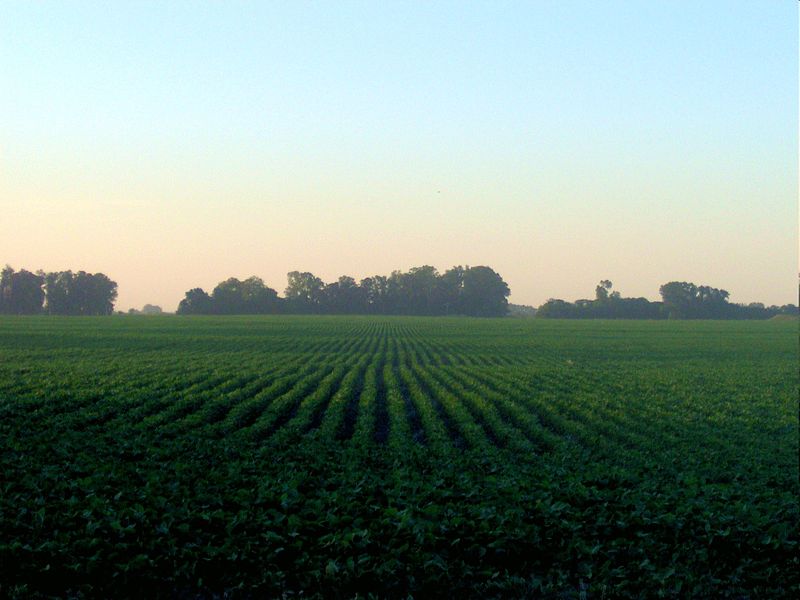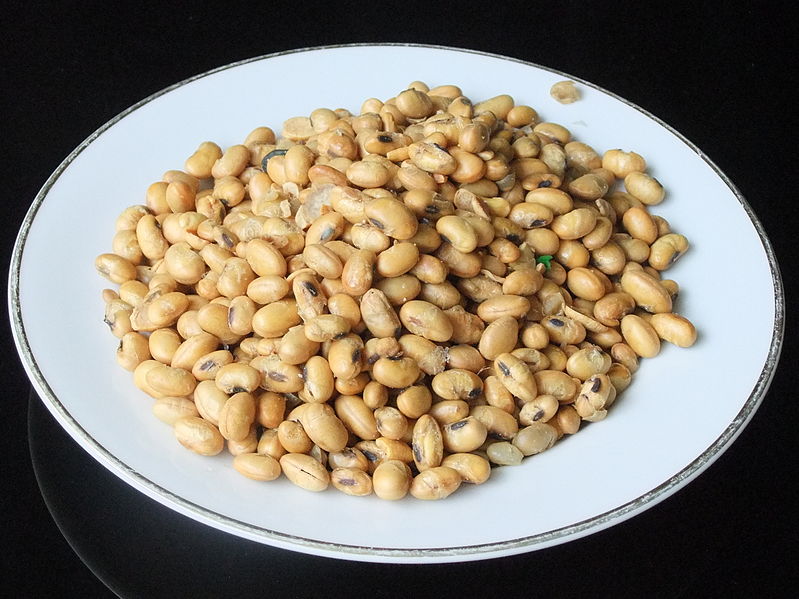Miracle plant SOYBEANS - what is it, how does it look and what is it good for?
Most of us have already tried or at least heard of soybeans. But what is it and how does it look? Is it healthy or is there just a "soybean hype"? And where and how is it produced? I want to put together a few facts to get an idea about this plant.

Morphology
Nowadays we have a great variety of soybeans ranging dramatically in size and color. There is everything between 20cm and 2m. The whole plant is covered with small hair including the pod, which grows in clusters of two to five. In the pod we find the seeds and this is what we are actually eating.
Like many other legumes like peas or lentils the roots of soybean live in symbiosis with a bacteria, that delivers the nitrogen (that needs every plant to grow) and in turn is supplied with other nutrients it needs. You can see them on the illustration above - the small round "knots" on the roots contain the bacteria.
Is it healthy?
Yes, it is. Soybeans contain significant amounts of all essential amino acids and they are classified as a protein source class 1, according to the World Health Organization (WHO). This means, the soybean gets the highest classification possible, the same like meat and milk and therefore is one (of quite a few) very good alternatives to meat (you DO NOT need meat AT ALL - other than the industry has been trying to tell us for decades!!).
The calories of soybeans come partly from the proteins with up to around 40% and partly of the fat with an equal amount. Most of the fat derives from unsaturated fats, including the Omega-3 fatty acids.
Soybeans contain a lot of other nutrients like zinc, magnesium, copper Vitamins from the B-Group (most of whole plant products contain these). In addition they are a good source for calcium, as many of the products are fortified with it.
What´s the problem with soybeans?
Large amounts of land is needed to produce as much soybeans as there is needed on the world market. Where is the land coming from and what are all the soybean crops used for?
Usually vast areas of rainforests in Latin America are stripped of any tree and bush to create space for soybean crops. The states have already gone through this process and they are the largest soybean exporting nation just ahead of Brazil, which produced around 65 million tons just in 2012 (FAO).
Most of the worldwide soy production is destined for industrial animal farms (around 80%) - the millions and millions of animals in western industries have to be fed and the countries themselves cannot produce enough to feed them so the main protein source Soy is imported. Mainly for chicken, cattle and pigs.
Another 10% are used for creating biodiesel and around 9% for the production of margarine and cosmetics. Only around one to two percent are going into other eatable soy bean products (isn´t that completely insane???). So instead of using the soy directly as a main protein source (especially in Brazil where many people are fighting against hunger), we are feeding it to animals, using many kilograms of food and water in order to create ONE KILOGRAM of meat. This isn´t going to work out long-term and everyone should understand that it makes more sense to use the soy DIRECTLY instead of transforming in less food (and to grow less in the first place).
Furthermore huge areas of rainforest are destroyed, but instead of family based farms which create far more jobs, the land is owned by few very rich people. The huge industrial farms only offer few jobs and in addition most of the soy produced is being sold out the country so there´s no real benefit for the local people.

The use of transgenic plants - less fertilizing or more risk for natural plants?
Nowadays the use of Soybeans which have been genetically modified is standard in many countries. According to a WWF-study 80 % of the Soybeans imported to Germany to feed animals are modified. In Latin America around 70% of all crops used are modified, in Argentina even 90%! The WWF criticizes that the consumer cannot be sure how the meat they are buying was fed and whether genetically modified products have been used. The producers are not bound to declare the origin of the animals´ food. Like with many other problems there are two sides in this discussion: some people might notice that the consequences of genetically modified plants mixing their genes with natural plants cannot be estimated and could lead to problems concerning the biodiversity of our planet. Nevertheless some people like to add, that without the use of the laboratory possibilities we have today, human kind will not be able to feed the ever growing world´s population. Especially not in the way, we are doing it now. I think we are still at the very beginning what concerns genetically modified organisms. Anyways the risks cannot be undervalued.
The ecological aftermath
In future we should definitely move away from eating as much meat as we are today. The thing is, that everything we do has multiple effects and usually there´s a lot behind every decision. Take for instance the mass meat production: due to the development of this industry we actually promoted monoculture and the destruction of the incredible biodiversity of the rainforest. So by consuming meat the way we do, we also affect the soy industry, which in turn affects the rainforest and its inhabitants. This in turn has direct impact on the people living with and from the rainforest. As we see, it´s not always as easy as it may seem.

The Monocultures promote bad soil quality, which in turn makes the use of more pesticides necessary. Large amounts finally end up in the groundwater and poison soil and water. In addition the Carbon dioxide saved in plants and trees in the rainforests is freed, when they are ripped out of the ground to create space for agriculture. So we are adding a lot of greenhouse gas to the atmosphere and therefore speed up the effects of global warming. In addition the transportation to Europe and other destinations wastes a lot of energy - we might have to make another plan in future if we do not want to keep destroying everything we rely on at this speed!
Less meat consumption can help!
We Germans consume around 60 kilograms of meat every year. A first step to improve the situation is the abstinence of meat. If less meat is consumed, we´d raise and slaughter less animals and therefore needed less soybeans to feed them. Once again we can all start with ourselves. Do yourselves a favor and stop or reduce eating meat. You´ll be healthier, you´ll save lifes and you´ll help the environment !
What do you think about soybeans and genetically modified plants? I´d be happy if you commented below!

